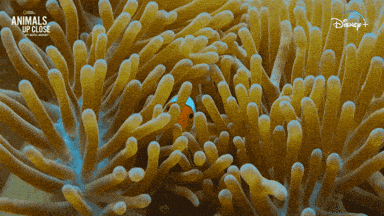- casualSTEM
- Posts
- Brain Builder | Painkiller 2.0 | Ferntastic
Brain Builder | Painkiller 2.0 | Ferntastic
Issue #139
Happy year of the dragon! 🐲
To celebrate, we’ll check out one of my favorite dragons before diving into recent groundbreaking science news.
-Steve, of house casualSTEM, Dovahkiin, and big fan of dragons
Get the weekly email that explains science in sweatpants. Stay smart for free.
Brain Builder
Axolotls are so smart, they can regrow their brains. Researchers mapped the telencephalon region, then removed a section to learn exactly how these dragon-like salamanders regenerate brain tissue.
Telencephalon has a large impact on animal behavior/cognition
Phase 1: Specialized progenitor cells begin healing
Phase 2: Those cells turn into neuroblasts (newly discovered in axolotl)
Regeneration is completed in phase 3, when neuroblasts become the exact neurons that were removed. Learning how these slippery salamanders build their brains back could lead to advances in regenerative medicine research.
Quick! (vote)Which would you rather ride? |
Check out last week’s results in “Unnatural Selection” below
Painkiller 2.0
Non-addictive pain medication may be coming soon. Vertex Pharmaceuticals recently wrapped up Phase 3 clinical trials of its non-opioid painkiller, VX-548.
Blocks NaV1.8 sodium channel
Stopping pain signals at the PNS (peripheral nervous system)
Effective for surgical and non-surgical pain
By combatting pain through the PNS, VX-548 avoids reward/pleasure areas of the central nervous system targeted by opioids. Vertex will file for FDA approval by mid-2024 to treat moderate-to-severe acute pain.
Ferntastic
Some plants don’t believe in wasting dead leaves. At least one species of fern, Cyathea rojasiana, uses its drooping fronds as roots.
Accidentally discovered by researchers clearing debris
Leafy roots soak up additional nutrients
Creating an advantage over neighboring tall plants
Frond feeding abilities were conferned by replication in a lab using nitrogen enriched soil. Future studies will uncover how leaf-root absorption works and whether it involves intra-root fungi. Soo what’s the root cause?

Together with beehiiv
What the buzz is about
These stories are presented thanks to beehiiv, an all-in-one newsletter suite built by the early Morning Brew team.
Fully equipped with built-in growth and monetization tools, no code website and newsletter builder, and best-in-class analytics that actually move the needle.
The top newsletters in the world are built on beehiiv, and yours can be too. It's the most affordable option in the market, and you can try it for free — no credit card required.

Clickables
🌙 How to accidentally name a “moon”
📷️ Polar bear naps his way to best photo
🥚 Inside 4 mysterious eggs from the ocean floor

Unnatural Selection
Last week: “Which Finding Nemo character would you rather be?”

First the results were like “whoa”, and then they were like “WHOA!”, and then they were like “whoooa”.
Make sure you vote up top for next week’s “Unnatural Selection”!

st3v on site
Frequent Flyer

created using DALL-E 4 + Steve’s editing skillz
Even though he’s technically a tiger, st3v is going all out celebrating the year of the dragon!

Claim your sunglasses!
Sharing is caring…and also unlocks cool shades 😎
You currently have 0 referrals, only 3 away from receiving casualSTEM Sunglasses!.

or simply forward this email to your friends!
currently available in US only

New to the casualSTEM?
Get the weekly email that explains science in sweatpants. Stay smart for free.
Missed last week’s science in sweatpants?
Catch-up here: 🔬Counting Nemo | Shroom Sponge | Micro Hammer
I'd love to hear from you!
Reply to this email or reach out on Twitter @_steveburgess. I'd love to hear your thoughts and suggestions!



Reply